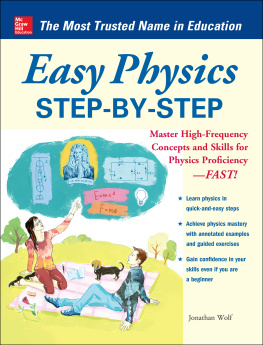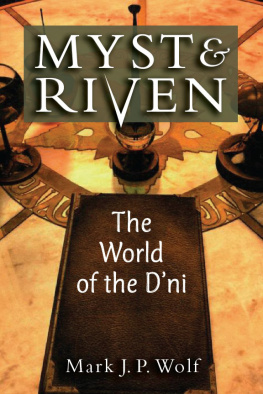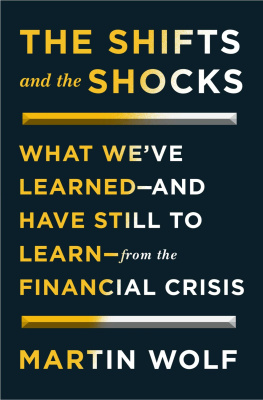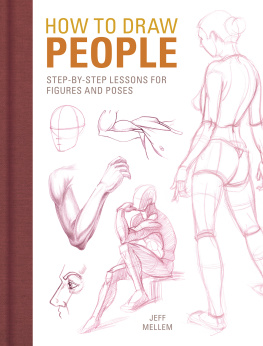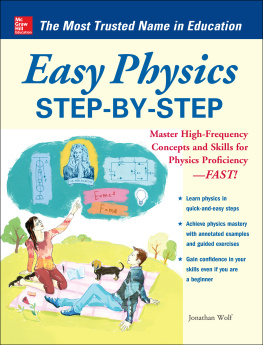
Copyright 2013 by The McGraw-Hill Companies, Inc. All rights reserved. Except as permitted under the United States Copyright Act of 1976, no part of this publication may be reproduced or distributed in any form or by any means, or stored in a database or retrieval system, without the prior written permission of the publisher.
1 2 3 4 5 6 7 8 9 10 QFR/QFR 1 0 9 8 7 6 5 4 3
e-ISBN 978-0-07-180592-6
e-MHID 0-07-180592-3
The material in this eBook also appears in the print version of this title: ISBN [978-0-07-180591-9], MHID [0-07-180591-5].
All trademarks are trademarks of their respective owners. Rather than put a trademark symbol after every occurrence of a trademarked name, we use names in an editorial fashion only, and to the benefit of the trademark owner, with no intention of infringement of the trademark. Where such designations appear in this book, they have been printed with initial caps.
McGraw-Hill eBooks are available at special quantity discounts to use as premiums and sales promotions, or for use in corporate training programs. To contact a representative please e-mail us at bulksales@mcgraw-hill.com.
Library of Congress Control Number 2012946831
Interior artwork by Progressive Information Technologies
Other titles in the series:
Easy Algebra Step-by-Step, Sandra Luna McCune and William D. Clark
Easy Biology Step-by-Step, Nichole Vivion
Easy Chemistry Step-by-Step, Marian DeWane
Easy Mathematics Step-by-Step, William D. Clark and Sandra Luna McCune
Easy Precalculus Step-by-Step, Carolyn C. Wheater
McGraw-Hill products are available at special quantity discounts to use as premiums and sales promotions or for use in corporate training programs. To contact a representative, please e-mail us at bulksales@mcgraw-hill.com.
This book is printed on acid-free paper.
TERMS OF USE
This is a copyrighted work and The McGraw-Hill Companies, Inc. (McGraw-Hill) and its licensors reserve all rights in and to the work. Use of this work is subject to these terms. Except as permitted under the Copyright Act of 1976 and the right to store and retrieve one copy of the work, you may not decompile, disassemble, reverse engineer, reproduce, modify, create derivative works based upon, transmit, distribute, disseminate, sell, publish or sublicense the work or any part of it without McGraw-Hills prior consent. You may use the work for your own noncommercial and personal use; any other use of the work is strictly prohibited. Your right to use the work may be terminated if you fail to comply with these terms.
THE WORK IS PROVIDED AS IS. McGRAW-HILL AND ITS LICENSORS MAKE NO GUARANTEES OR WARRANTIES AS TO THE ACCURACY, ADEQUACY OR COMPLETENESS OF OR RESULTS TO BE OBTAINED FROM USING THE WORK, INCLUDING ANY INFORMATION THAT CAN BE ACCESSED THROUGH THE WORK VIA HYPERLINK OR OTHERWISE, AND EXPRESSLY DISCLAIM ANY WARRANTY, EXPRESS OR IMPLIED, INCLUDING BUT NOT LIMITED TO IMPLIED WARRANTIES OF MERCHANTABILITY OR FITNESS FOR A PARTICULAR PURPOSE. McGraw-Hill and its licensors do not warrant or guarantee that the functions contained in the work will meet your requirements or that its operation will be uninterrupted or error free. Neither McGraw-Hill nor its licensors shall be liable to you or anyone else for any inaccuracy, error or omission, regardless of cause, in the work or for any damages resulting therefrom. McGraw-Hill has no responsibility for the content of any information accessed through the work. Under no circumstances shall McGraw-Hill and/or its licensors be liable for any indirect, incidental, special, punitive, consequential or similar damages that result from the use of or inability to use the work, even if any of them has been advised of the possibility of such damages. This limitation of liability shall apply to any claim or cause whatsoever whether such claim or cause arises in contract, tort or otherwise.


With the wide variety of review books on the market designed to supplement coursework, you may be asking, Why do we need another review book? Easy Physics Step-by-Step is unique because it is not designed as a test preparation book. This book will guide you, step-by-step, through the material covered in a typical high school physics course. It will take a unique approach to problem solving without teaching to the test. The emphasis is on presenting a review of fundamental concepts and encouraging you to think critically and creatively while solving problems.
In the spirit of this approach, introduces a problem-solving ring as a guide to enhancing your skills as you progress through the material. You will notice that there are no multiple-choice questions. These types of assessments have their use, but the development of creative and critical thinking involves writing out the problems and their solutions in order to actively and constructively promote learning and understanding.
The material covered in this book is taught in most high schools. It reflects a beginning course in elementary physics and so tricky or difficult problems are kept to a minimum. Many sample problems are presented in a step-by-step manner to help ease you into solving more difficult problems. At the end of each chapter, there are several additional practice problems for you to solve on your own. An answer key is provided at the end of the book.
Topics and their level of difficulty have been selected based on 30 years experience in teaching high school physics and represent material that will give the reader a good introduction and review of elementary physics. It is assumed that the reader has a working knowledge of basic algebra and trigonometry at the secondary school level.
I would like to thank Christopher Brown (from McGraw-Hill Education) and Grace Freedson (from the Grace Freedson Publishing Network) for facilitating this project. My colleagues Vanessa Blood, Robert Draper, Patricia Jablonowski, and Joseph Vaughan, from Scarsdale High School, have always been very supportive and helpful. Finally, I would like to thank my wife, Karen, my daughter Marissa and her fianc Eli Lieberman, and my daughter Ilana for all of their love and support.

In this chapter you will learn about the methods of problem solving in physics. These are techniques that you will use throughout this book as you learn about the mechanical universe.
The Nature of Science
What is physics? This is a difficult question to answer. If you are reading this book, then you are either taking a class in physics or are interested in learning more about physics. Science presents us with a worldview that relies on our sense experiences in conjunction with the rules of logic. We observe the universe in a state of motion and change all around us. How do we make sense of it all? What framework and structure can we build to understand and make predictions about the universe and also understand the practical applications of this knowledge?

